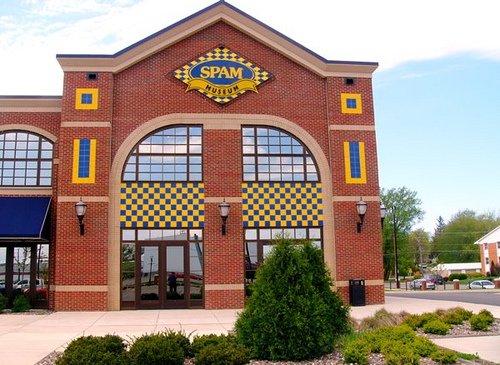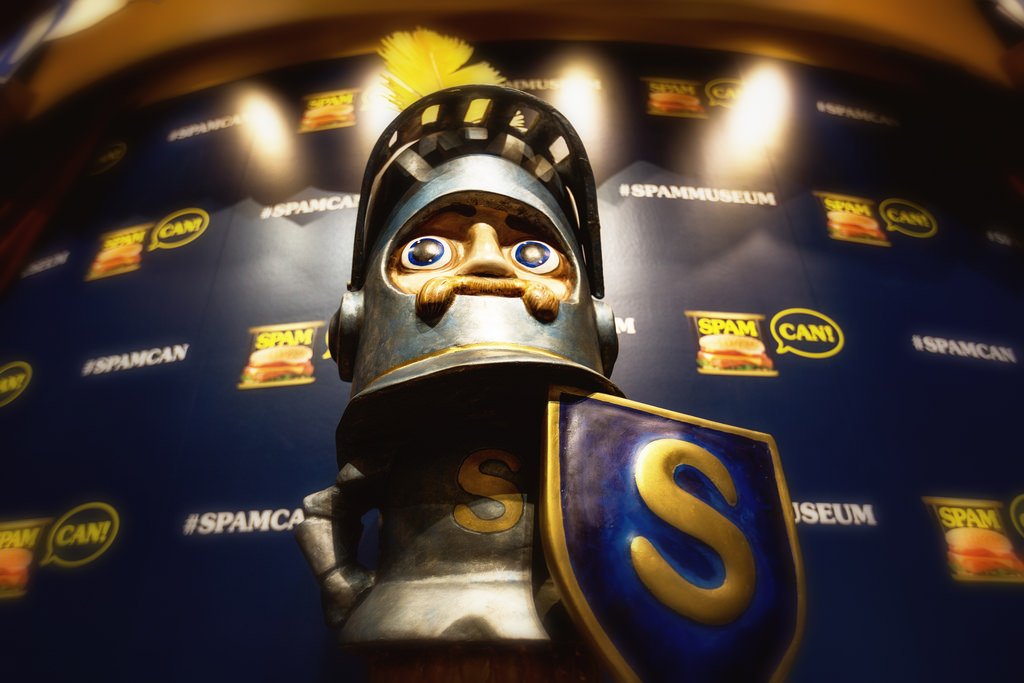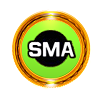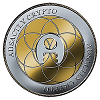If you ever decide to travel in the United States by car or bus
along the many long, winding highways that cut across the landscape in all directions, you should always remember to check the route ahead for interesting attractions along the way. America has a vast abundance of surprisingly interesting sights that will enrich your experience of the local culture as you are traveling through if you know where to look.
I am going to tell you about one such fascinating place, where tens of thousands of people flock every year to see something that some have described as rather unusual, but that feels like the perfect fit where it is. Nestled in the quaint downtown district of the small, rural community of Austin, MN, right off of Interstate 90 and only a few mile detour from Interstate 35, is the SPAM® Museum.
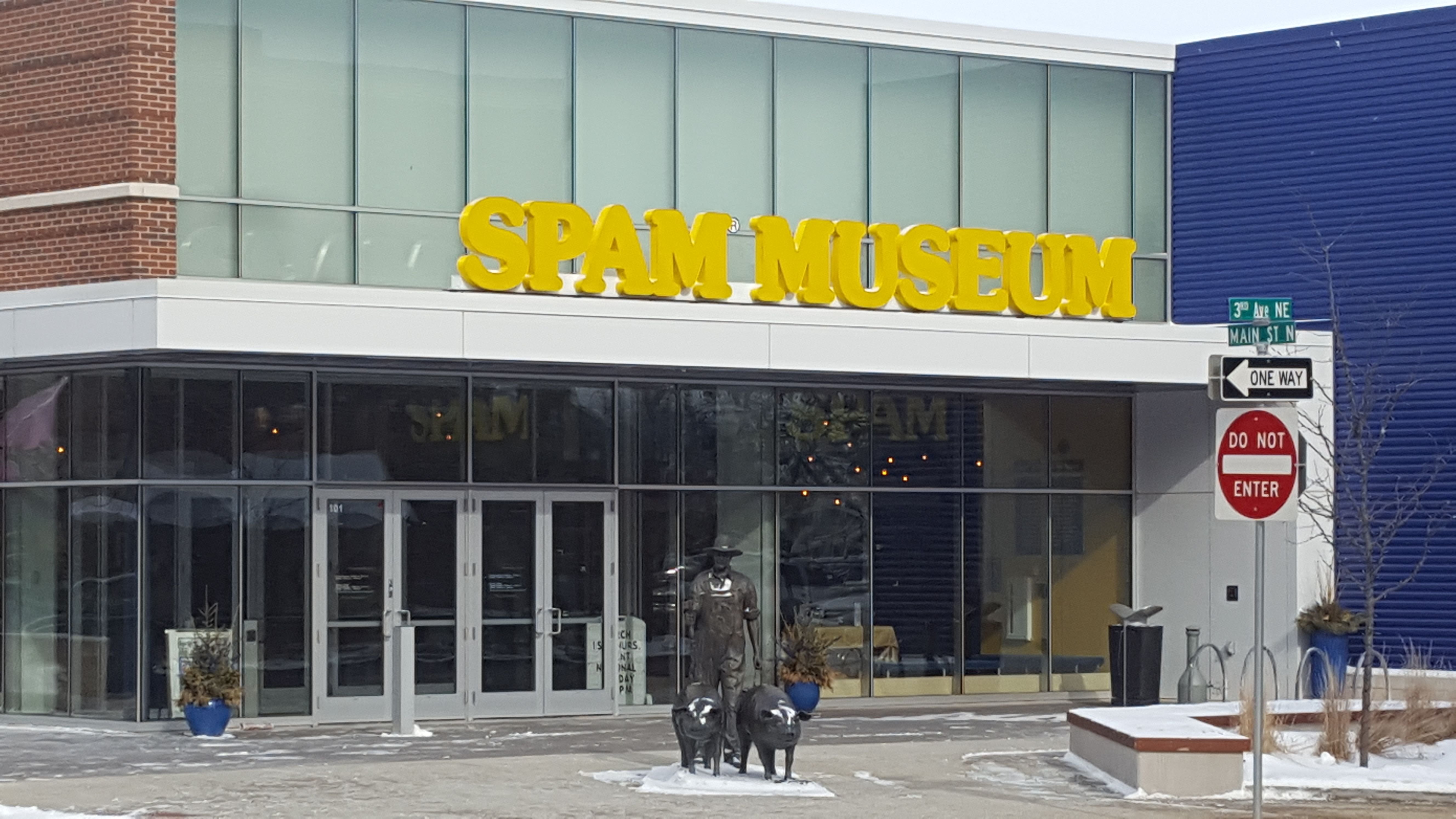

You have most likely seen it before,
at your grocery store or maybe in grandma's pantry. There's a decent chance you have even eaten it before, perhaps on a family camping trip. You might love it, or you might be indifferent, but for over 80 years now, SPAM® has been the dominating force of the luncheon meat world since it's inception in 1937.
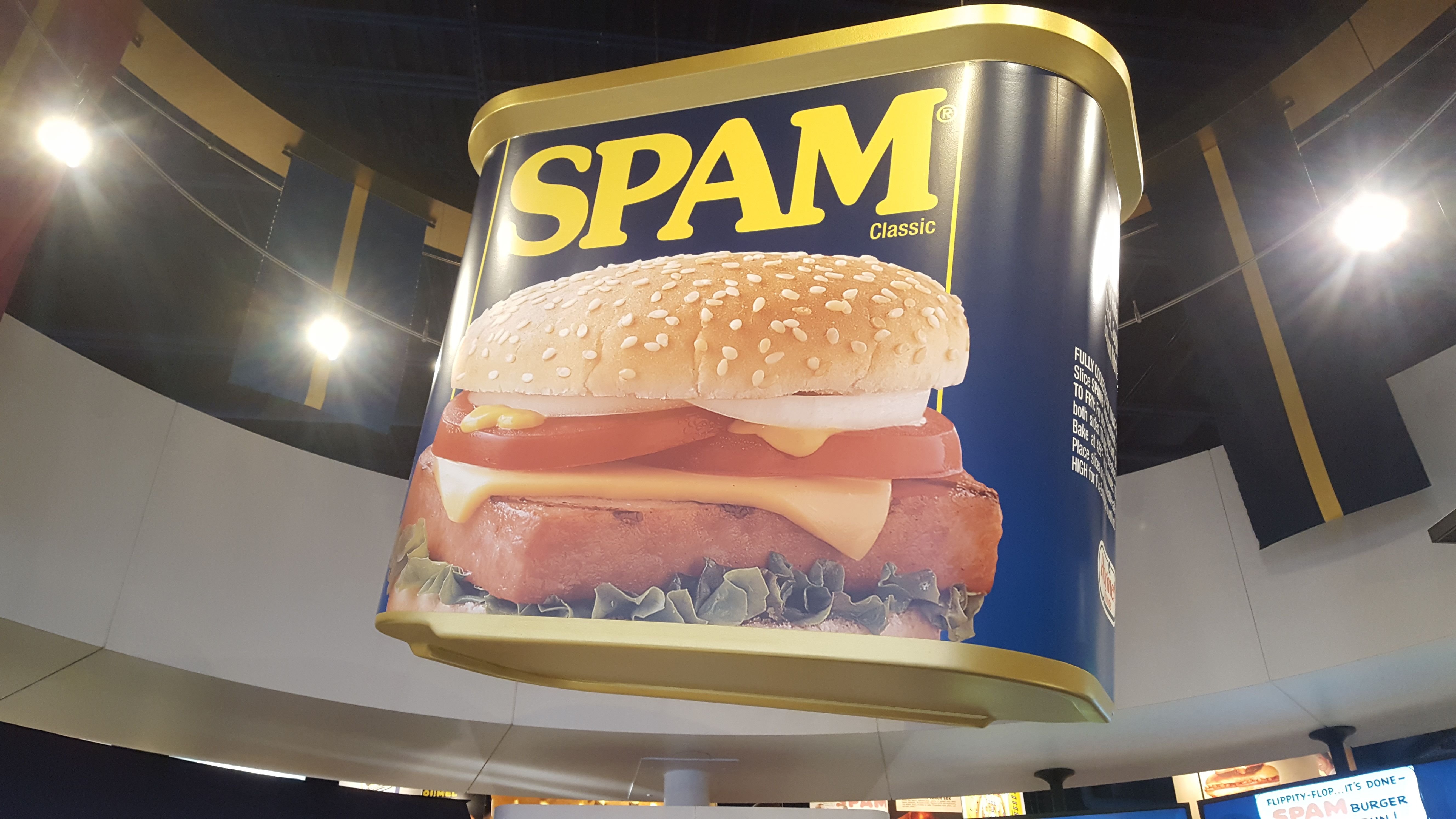
No one is entirely sure how SPAM® got its name. The story goes that Jay Hormel hosted a New Year's Eve party in '36, where he offered $100 to anyone in attendance who could come up with a name for this new luncheon meat, made with pork shoulder and ham, and spiced with salt, sugar, water, potato starch, and sodium nitrite. He even sweetened the deal by offering a free drink for every suggestion submitted. Jay was quoted as saying, "Along the fourth or fifth drink, they began showing some inspiration."
Kenneth Daigneau, the brother of a Hormel executive, apparently coined the term "SPAM®", although no one is quite sure how he arrived at the name. What we do know is the name stuck, and the rest is history!
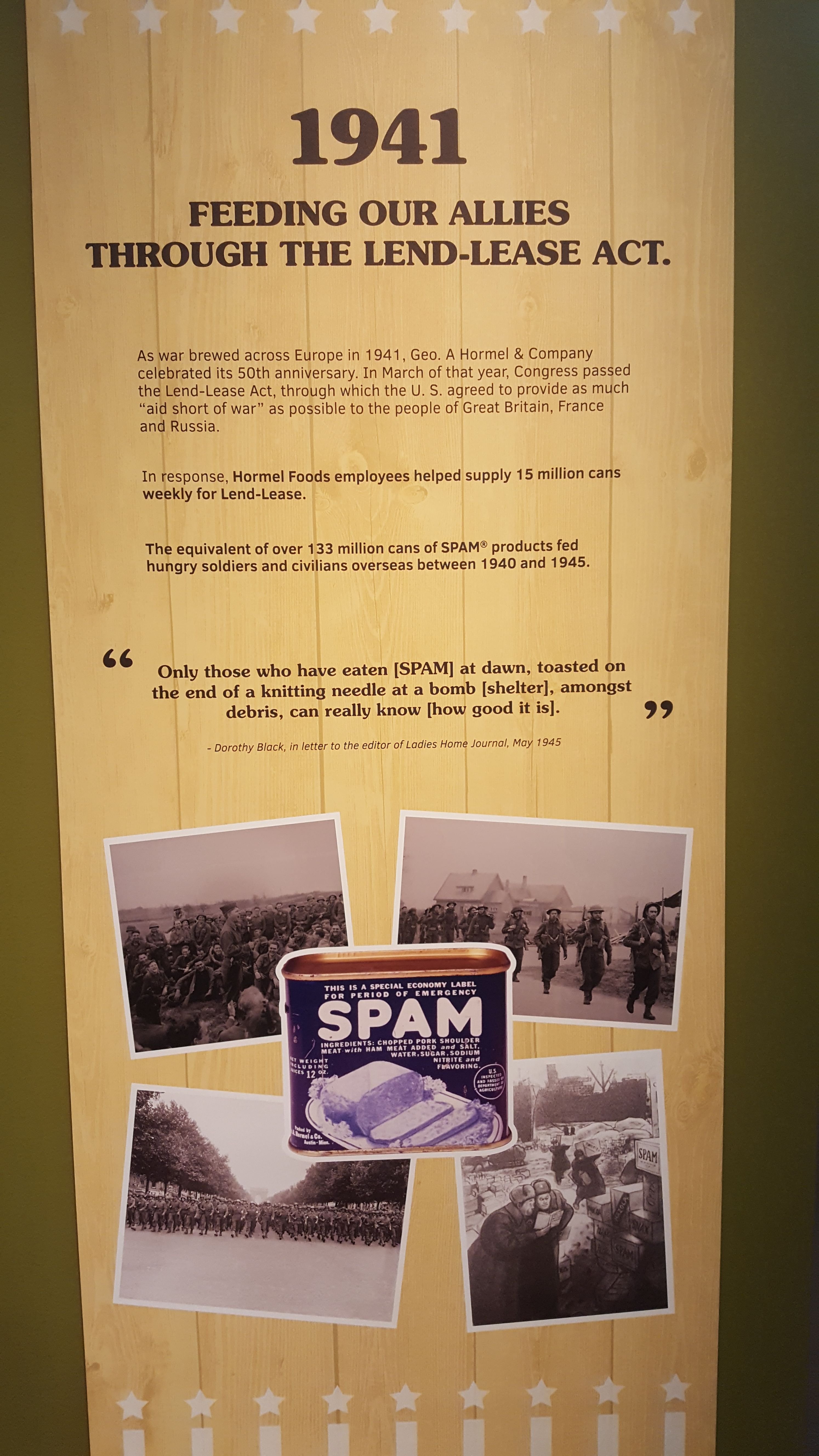
SPAM® found its place in society very soon after its invention due to World War 2. During the war, the U.S. signed the Lend-Lease Act with Great Britain and Russia, to provide Europe with the supplies needed to defeat Hitler. One of those necessary staples was SPAM®, and lots of it. Hormel® produced over 170 million pounds of SPAM® to be shipped overseas as part of the war effort.
Indeed, many credit SPAM® with having a direct impact on the Allies winning the war! In fact, President Eisenhower wrote to the president of Hormel® after the war, stating:
"I ate my share of SPAM® along with millions of other soldiers. I'll even confess a few unkind remarks about it -- uttered under the strain of battle, you understand. But as former Commander In Chief, I believe I can officially forgive you your only sin: sending us so much of it."
But you don't have to have been the President of the United States to have benefitted from the world's most dynamic meat. Even if you were, say, a top Soviet leader in World War 2, and, for argument's sake, you didn't even like America by the time the war was over, you might still like SPAM®!! Case in point: Nikita Khrushchev wrote in his memoir Khrushchev Remembers that:
"Without SPAM®, we would not have been able to feed our army."
💕That is some serious love, coming from that guy.💕
But I tell you what, it didn't stop there.
SPAM® would go on to conquer the world!
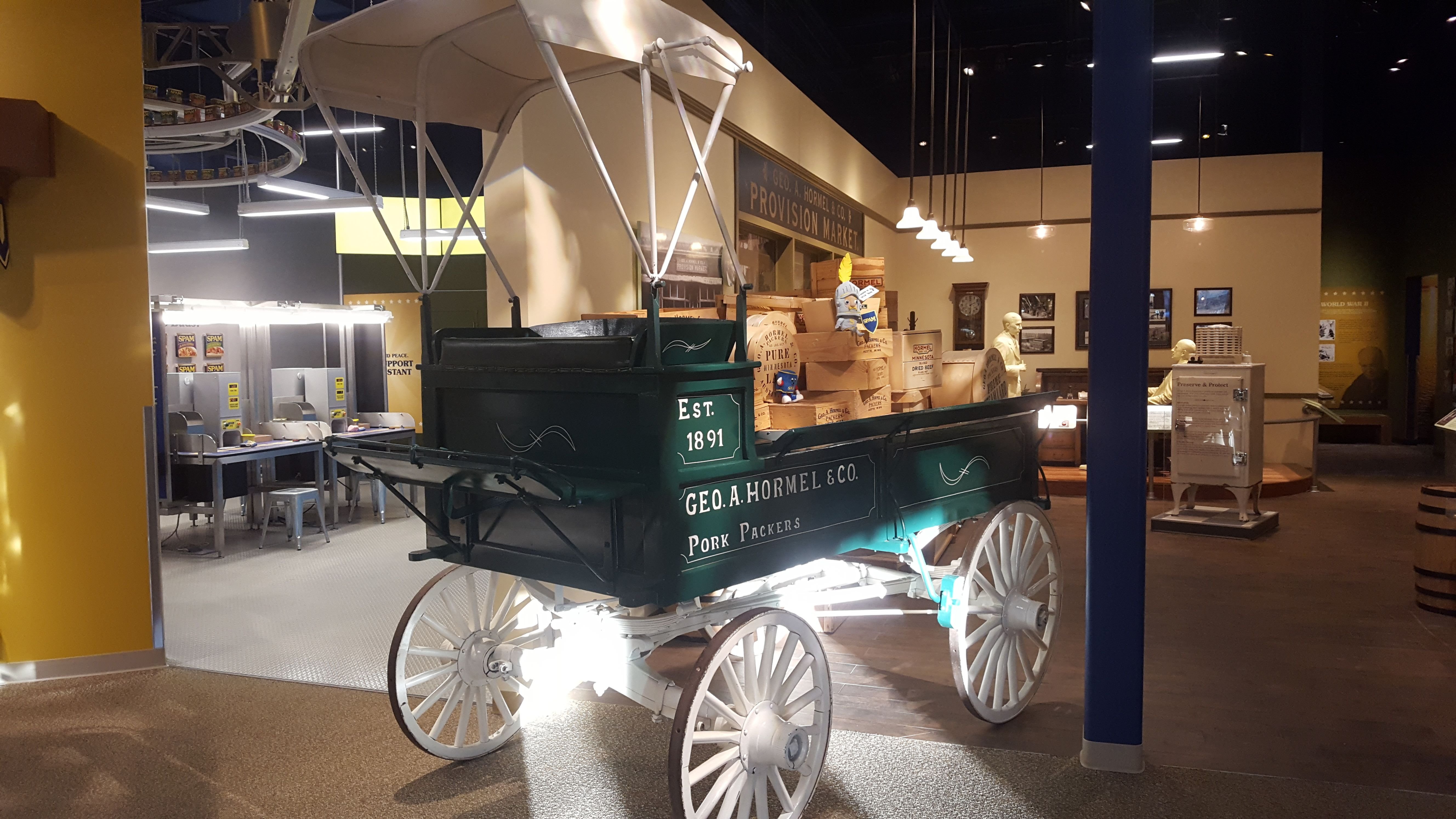
Ok, so maybe that is being a little hyperbolic, but the fact is, after the War was over SPAM® would increase in popularity both domestically and around the world!
Fast forward to today, and there are over 40 countries that eat SPAM®! According to Hormel®, SPAM® sales in 2011 (the most current published data available) reached 122 MILLION cans that year, and while I can't tell you the exact number that they sold in 2017, I do know that it is much closer to 150 million cans-per-year mark. I can also tell you that Hormel® has produced nearly 9 billion cans of SPAM® since its creation!

So, about that Museum... ⁇
Well like I was saying, right here in the heart of Austin there is a fun, interactive place where you can learn everything that there is to know about this miracle meat-in-a-can! The SPAM® Museum first came into being in 1991 as the Hormel® First Century Museum, celebrating the company's history from 1891-1991. It was located in the old Oak Park mall, in what was essentially a really large storage closet.
In its defense, it was never intended to be anything big. It was just an old company town putting up a modest shrine to a piece of its heritage. What it ended up being, though, was so much more. So many people showed up that first year, mostly curious about SPAM® that the company decided to keep it going for a little while, under the new name, the SPAM® Museum. After a while, it became clear that the experience of going through the museum was leaving visitors with a stronger positive connection with the company, so Hormel® decided to double down.
They built the brand new SPAM® Museum just across the interstate from the Hormel® Headquarters in 2001, to great fanfare. In absolutely no time at all, it became the largest tourist attraction in the area. People would come from all over the world, some just stopping off the highway to see what the billboards were talking about, some coming as though on a sacred pilgrimage, all amazed to see what they found.
֍ But Hormel® wasn't done yet. ֎
Since 2010, the city of Austin had been making a more conscious effort to come up with ideas for ways of revitalizing the downtown commercial sector, which had been effectively left for dead in the advent of the internet, along with all of the small retail shops that didn't manage to capture a specific niche. They had hoped that the SPAM® Museum would drive traffic downtown, but unfortunately, it was located too close to the freeway. Visitors would, for the most part, get off of the highway, go to the museum, and get right back on the highway again.
To help solve the problem, Hormel® agreed to purchase the empty plot land from the city and relocate the SPAM® Museum closer to the heart of downtown, while converting the old Museum into office space which the company so badly needed anyway. In designing the new Museum, they forwent the large parking lot, relying on the ample downtown parking to serve the visitor traffic and to push more foot traffic to the downtown businesses, a scheme which has worked wonderfully, based on conversations that I have had with some of the shop owners in the area.
In addition to a new location,
the SPAM® Museum was designed as a modern showcase of the SPAM® brand, a celebration of the company's long history and the impact that this legendary brand has made on the world. The new Museum opened in April 2016, in time for Hormel®'s 125th Anniversary.
🎇ENTERING THE MECCA OF MEAT!🎇
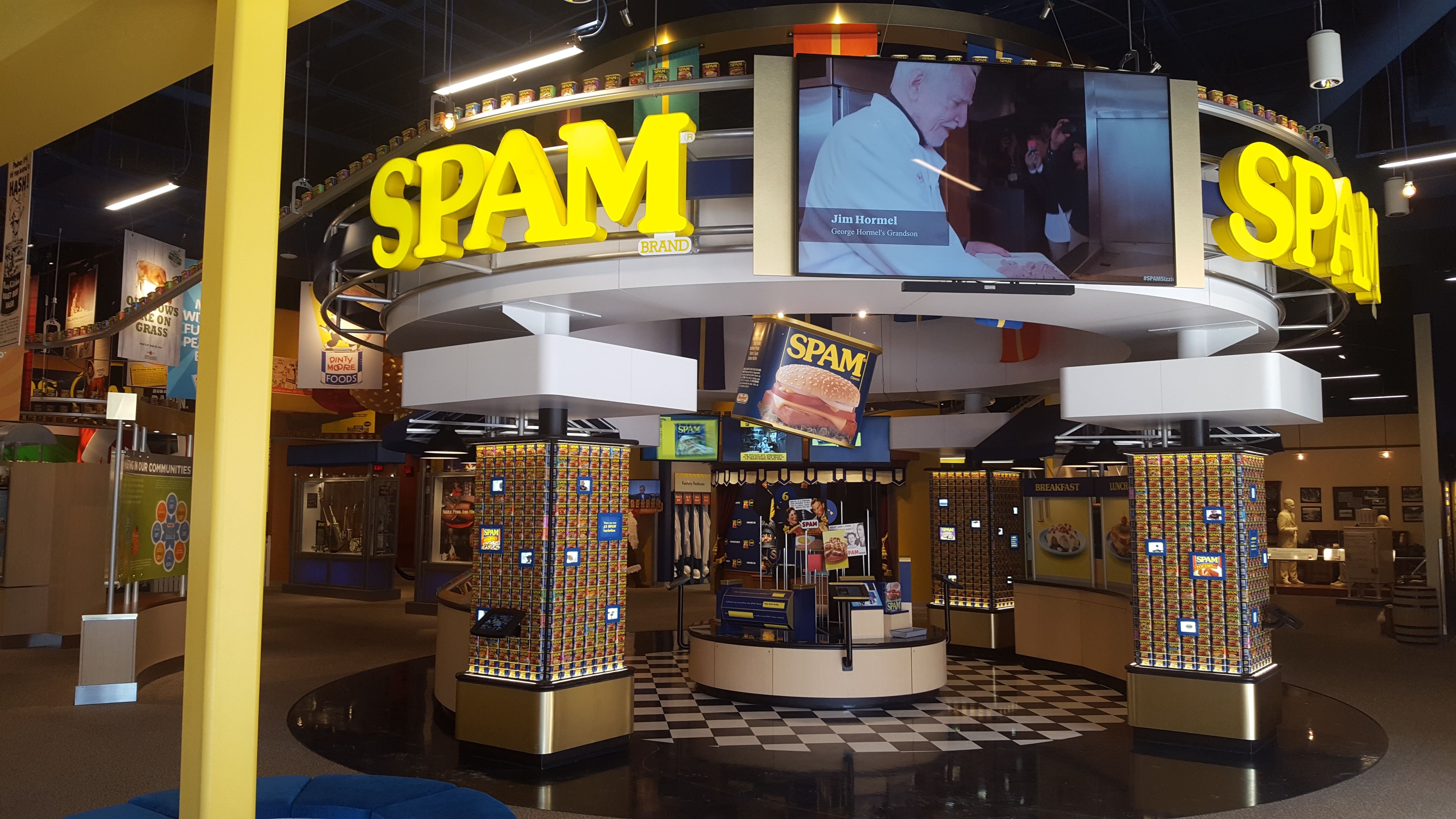
When you walk into the new SPAM® Museum, you are immediately greeted by a SPAMbassador, as well as a cacophony of colors, sounds, and that familiar smell of fried SPAM®. On the right, as you walk in there is a large area called "Can Central", where you can find a SPAM® Trivia game, as well as touch screens where you can send award-winning recipes to yourself via email. And don't worry, the SPAM® Museum doesn't believe in spamming your email.
From there, the tour can branch off in many different directions, but the best way would be to stroll through the History section, which details the early years of the Hormel history, from its modest start in 1891 in an abandoned creamery, and going through the late 1930s to the introduction of Dinty Moore, Hormel Chili, and of course, SPAM®!

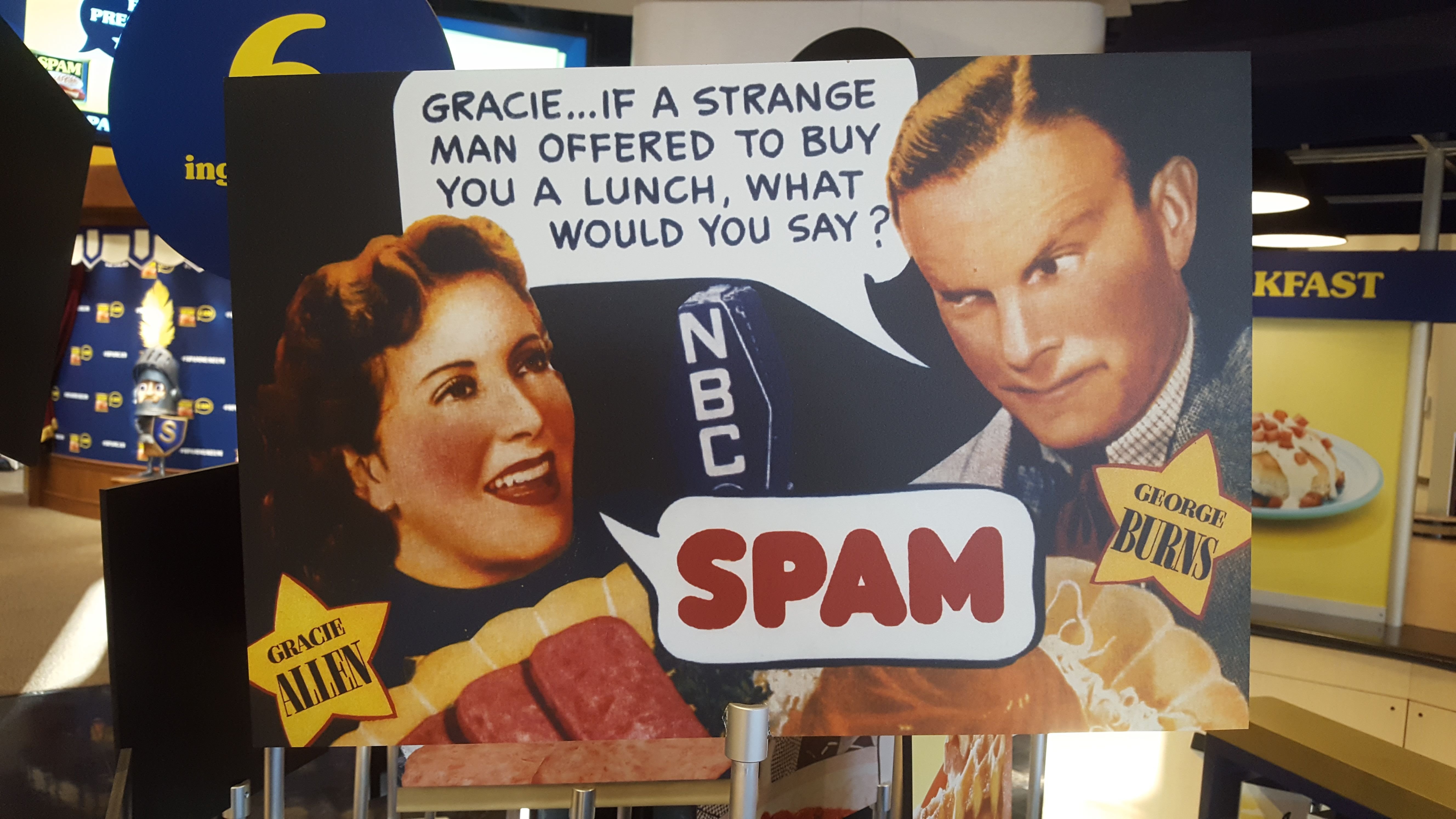 Source: Me
Source: MeFrom there, it's on
to the World War 2 exhibit where you can find more on the impact of SPAM® on the war and some interesting old war artifacts from the Hormel® archives. It's there that you'll be able to see more about the Hormel Girls, one of the longest-running and most ambitious advertising campaigns in any American company's history.
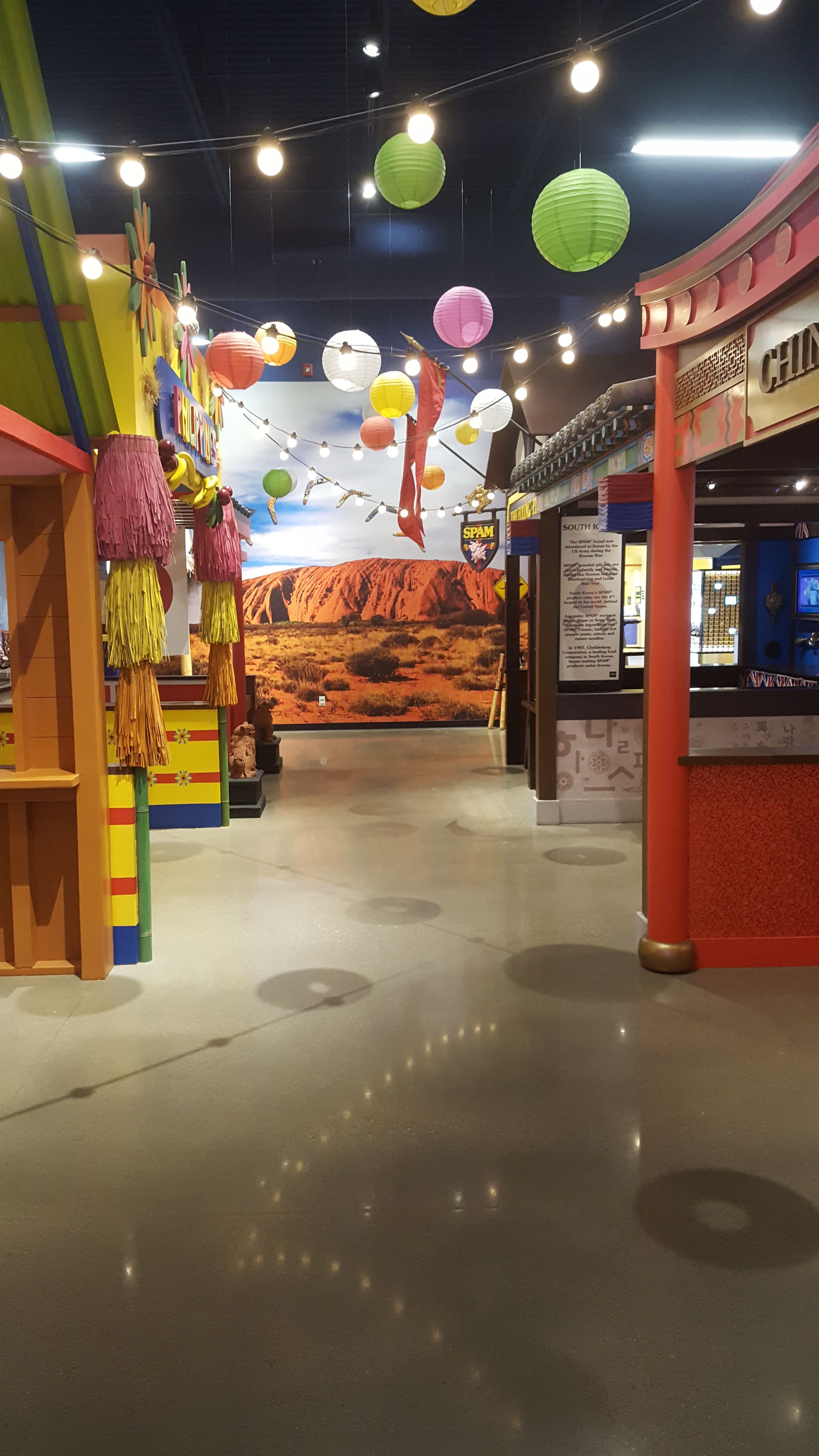 Source: Me
Source: MeCut to the right and you will see a large interactive map at the entrance to the World Market that shows all of the different countries where SPAM® is sold, along with pictures, videos, and other information on each of the major markets. The international all time lovers of SPAM®, such as Hawaii (technically domestic, but...), South Korea, Japan, and the United Kingdom.
You can get a rundown of how SPAM® is made by going into the "SPAM® Ballet", along with a video showing more of the canning process. One of the most popular parts of the Museum is here as well, a station where kids and adults can try to "can" their own toy cans of SPAM®, and see how they measure up to the output at the plant. (Hint: The plant makes 395 cans per minute; you will never get close.)
Other cool features:
- The kid's play area, that features a full play kitchen for making all kinds of imaginary treats, a jungle gym, and a reading nook.
- The SPAM® rocket, designed by Hormel® sales manager Gerald Meaux, because who doesn't love building 12' rockets in their backyard that can fly up to 22,000 feet?
- The SPAMples, which are pieces of cubed, fried SPAM® with a pretzel stick stuck into it that the SPAMbassadors bring around to sample. Usually they will take requests, and they always enjoy serving the more off-the-wall varieties that you may not have seen where you live.
- The SPAM® Shop, where you can get just about anything imaginable with a SPAM® logo on it, as well as the only place in the continent where you can find ALL FIFTEEN VARIETES of SPAM®!!
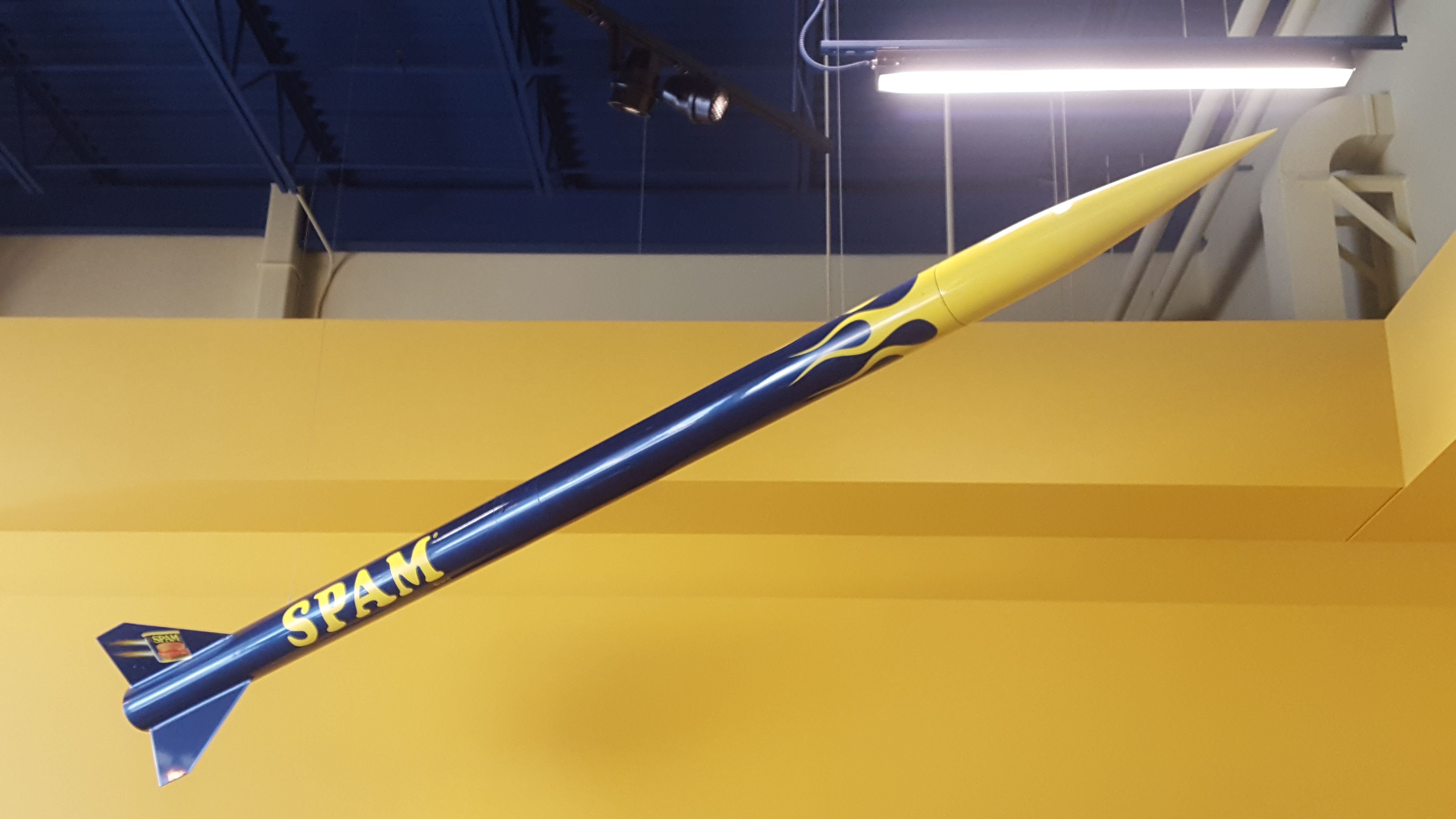
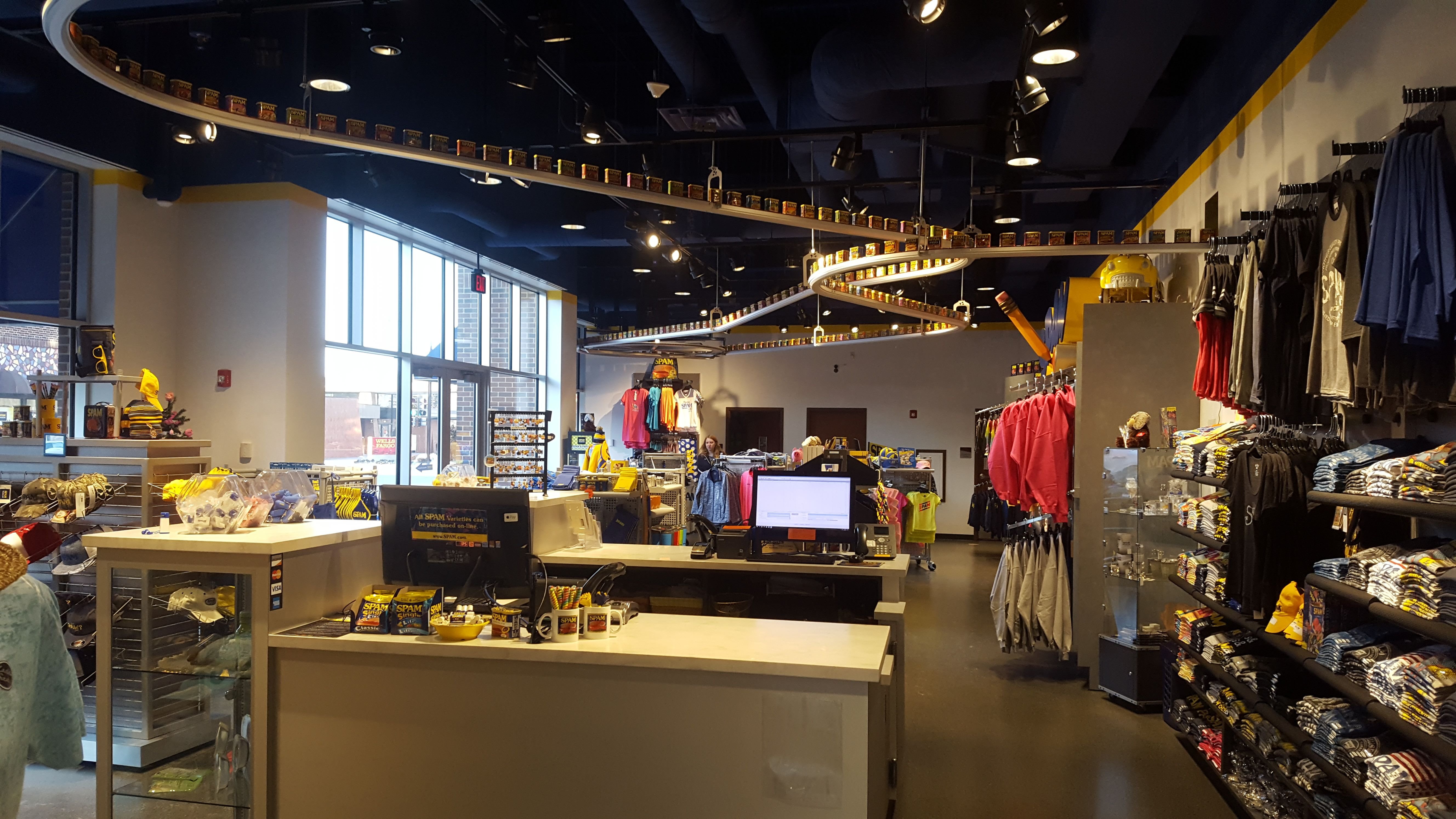
Have you been here before, or do you have any questions? Comment them below and I will do my best to answer.

If you enjoyed reading this post that took me way too long to write, given what it was, please check out my monthly art curation series, where I try to spread the good word of Steem and bring deserving, talented new artists onto the platform!
ALAS | January | Meet: Christina Schmidt
Amazing Local Artist Spotlight (ALAS) Intro
AND OF COURSE:
Also, check out these other great communities to find other great artists and creatives! Just click on the banners to see more!
 This post was edited with HastyMarkup!
This post was edited with HastyMarkup![//]:# (!steemitworldmap 43.672217 lat -92.974033 long d3scr)

